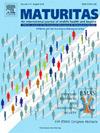Exposure to ambient air pollution and falls risk in a community-dwelling adult population
IF 3.6
2区 医学
Q2 GERIATRICS & GERONTOLOGY
引用次数: 0
Abstract
Background
Falls are a major cause of disability. Whether exposure to ambient air pollution contributes to the occurrence of falls remains unclear.
Objective
To investigate the cross-sectional and longitudinal associations between ambient air pollution and the risk of falls in a community-dwelling adult population.
Methods
We included participants aged ≥45 years from the China Health and Retirement Longitudinal Study. Ambient air pollution was quantified as city levels of PM₂.₅ taken from the China High-Resolution Air Pollution dataset. Self-reported falls were the outcome of interest. Using group-based trajectory modelling, falls trajectories were investigated. Multivariable-adjusted logistic regression models were used to calculate the association between PM2.5 exposure and falls.
Results
A total of 9869 participants were divided into four groups according to their PM₂.₅ exposure: low, moderate, high, severely high. Two falls trajectories, low risk (74.3 %) and high risk (25.7 %), were observed. Exposure to moderate or high, but not severely high levels of PM₂.₅ elevated the risk of falls, compared with low levels of exposure cross-sectionally (Q2 (adj.OR 1.16, 95 % CI = 1.02–1.33), Q3 (adj.OR 1.29, 95 % CI = 1.13–1.47)) and longitudinally (Q3 (adj.OR 1.25, 95 % CI =1.10–1.43)). No significance for P for trend suggested non-linear associations. Females, individuals >60 years and those with cognitive impairment were observed to have a higher risk of falls from exposure to moderate to high levels of ambient air pollution, but the interaction was statistically insignificant.
Conclusion
Being exposed to moderate and high PM₂.₅ levels was associated with an increased risk of falls among adults. The finding highlights the importance of air-quality improvement as a potential intervention to prevent falls in the community.
社区居住成年人暴露于环境空气污染与跌倒风险
背景:跌倒是致残的主要原因。暴露在环境空气污染中是否会导致跌倒的发生尚不清楚。目的:探讨环境空气污染与社区居住成年人跌倒风险之间的横断面和纵向关联。方法:我们纳入了来自中国健康与退休纵向研究的年龄≥45岁的参与者。环境空气污染被量化为城市的PM 2水平。₅取自中国高分辨率空气污染数据集。自我报告的下降是兴趣的结果。利用基于群的轨迹建模,对坠落轨迹进行了研究。采用多变量调整logistic回归模型计算PM2.5暴露与跌倒之间的关系。结果:9869名参与者根据PM 2分为4组。₅曝光度:低、中、高、极高。观察到两种下降轨迹,低风险(74.3%)和高风险(25.7%)。暴露于中等或高但不严重的PM 2水平。与低水平的横断面暴露(Q2 (adjj . or 1.16, 95% CI = 1.02-1.33), Q3 (adjj . or 1.29, 95% CI = 1.13-1.47))和纵向暴露(Q3 (adjj . or 1.25, 95% CI =1.10-1.43))相比,₅增加了坠落的风险。趋势P无显著性表明非线性关联。研究发现,女性、60岁以上的人以及有认知障碍的人暴露在中度至重度环境空气污染中,摔倒的风险更高,但这种相互作用在统计上不显著。结论:暴露于中高PM 2环境。₅水平与成年人摔倒的风险增加有关。这一发现强调了改善空气质量作为预防社区跌倒的潜在干预措施的重要性。
本文章由计算机程序翻译,如有差异,请以英文原文为准。
求助全文
约1分钟内获得全文
求助全文
来源期刊

Maturitas
医学-妇产科学
CiteScore
9.10
自引率
2.00%
发文量
142
审稿时长
40 days
期刊介绍:
Maturitas is an international multidisciplinary peer reviewed scientific journal of midlife health and beyond publishing original research, reviews, consensus statements and guidelines, and mini-reviews. The journal provides a forum for all aspects of postreproductive health in both genders ranging from basic science to health and social care.
Topic areas include:• Aging• Alternative and Complementary medicines• Arthritis and Bone Health• Cancer• Cardiovascular Health• Cognitive and Physical Functioning• Epidemiology, health and social care• Gynecology/ Reproductive Endocrinology• Nutrition/ Obesity Diabetes/ Metabolic Syndrome• Menopause, Ovarian Aging• Mental Health• Pharmacology• Sexuality• Quality of Life
 求助内容:
求助内容: 应助结果提醒方式:
应助结果提醒方式:


